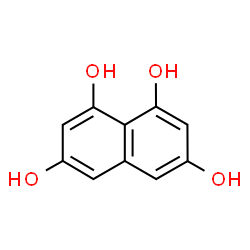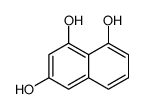129-96-4
| 中文名 | 媒染剂 |
|---|---|
| 英文名 | chromotropic acid disodium salt |
| 中文别名 |
1,8-二羟基萘-3,6-二磺酸钠
4,5-二羟基-2,7-萘二磺酸二钠盐 |
| 英文别名 |
chromogen c
Sodium chromotropate Disodium chromotropicate Disodium4,5-dihydroxy-naphthalenedisulfonate EINECS 204-972-9 Disidium4,4'-Bis(2-sulfonatostyryl)biphenyl 1,8-Dihydroxynaphthalene-3,6-disulphonic acid disodium salt 4,5-Dihydroxynaphthalin-2,7-disulfonsaeure Dinatriumsalz 4,5-dihydroxynaphthalene-2,7-disulfonic acid disodium salt dihydrate Chromotropicaciddisodiumsal chromotropic acid Mordantbrown Chromotropate 4,5-dihydroxynaphthalene-2,7-disulfonic acid disodium salt 4,5-dihydroxy-2,7-naphthalenedisulphonic acid disodium salt Chromatropic Acid Sodium 1,8-dioxynaphthalene-3,6-disulfonate |
| 熔点 | >300ºC(lit.) |
|---|---|
| 分子式 | C10H6Na2O8S2 |
| 分子量 | 364.25900 |
| 精确质量 | 363.93000 |
| PSA | 171.62000 |
| LogP | 2.22080 |
| 计算化学 | 1.疏水参数计算参考值(XlogP):无 2.氢键供体数量:2 3.氢键受体数量:8 4.可旋转化学键数量:0 5.互变异构体数量:11 6.拓扑分子极性表面积172 7.重原子数量:22 8.表面电荷:0 9.复杂度:480 10.同位素原子数量:0 11.确定原子立构中心数量:0 12.不确定原子立构中心数量:0 13.确定化学键立构中心数量:0 14.不确定化学键立构中心数量:0 15.共价键单元数量:3 |
Synonym:1,8-Dihydroxynaphthalene-3,6-disulfonic acid, disodium salt, dihydrate; Chromotropic acid, disodium salt, dihydrate Section 2 - COMPOSITION, INFORMATION ON INGREDIENTS
Risk Phrases: 36/37/38 Section 3 - HAZARDS IDENTIFICATION EMERGENCY OVERVIEW
Irritating to eyes, respiratory system and skin. Potential Health Effects Eye: Causes eye irritation. Skin: Causes skin irritation. May be harmful if absorbed through the skin. Ingestion: May cause irritation of the digestive tract. May be harmful if swallowed. Inhalation: Causes respiratory tract irritation. May be harmful if inhaled. Chronic: No information found. Section 4 - FIRST AID MEASURES Eyes: In case of contact, immediately flush eyes with plenty of water for at least 15 minutes. Get medical aid. Skin: In case of contact, flush skin with plenty of water. Remove contaminated clothing and shoes. Get medical aid if irritation develops and persists. Wash clothing before reuse. Ingestion: If swallowed, do not induce vomiting unless directed to do so by medical personnel. Never give anything by mouth to an unconscious person. Get medical aid. Inhalation: If inhaled, remove to fresh air. If not breathing, give artificial respiration. If breathing is difficult, give oxygen. Get medical aid. Notes to Physician: Section 5 - FIRE FIGHTING MEASURES General Information: As in any fire, wear a self-contained breathing apparatus in pressure-demand, MSHA/NIOSH (approved or equivalent), and full protective gear. During a fire, irritating and highly toxic gases may be generated by thermal decomposition or combustion. Extinguishing Media: Use water spray, dry chemical, carbon dioxide, or appropriate foam. Section 6 - ACCIDENTAL RELEASE MEASURES General Information: Use proper personal protective equipment as indicated in Section 8. Spills/Leaks: Vacuum or sweep up material and place into a suitable disposal container. Avoid generating dusty conditions. Provide ventilation. Section 7 - HANDLING and STORAGE Handling: Wash thoroughly after handling. Remove contaminated clothing and wash before reuse. Use with adequate ventilation. Minimize dust generation and accumulation. Avoid contact with eyes, skin, and clothing. Keep container tightly closed. Avoid breathing dust. Storage: Store in a tightly closed container. Store in a cool, dry, well-ventilated area away from incompatible substances. Section 8 - EXPOSURE CONTROLS, PERSONAL PROTECTION Engineering Controls: Facilities storing or utilizing this material should be equipped with an eyewash facility and a safety shower. Use adequate ventilation to keep airborne concentrations low. Exposure Limits CAS# 129-96-4: CAS# 5808-22-0: Personal Protective Equipment Eyes: Wear appropriate protective eyeglasses or chemical safety goggles as described by OSHA's eye and face protection regulations in 29 CFR 1910.133 or European Standard EN166. Skin: Wear appropriate protective gloves to prevent skin exposure. Clothing: Wear appropriate protective clothing to prevent skin exposure. Respirators: A respiratory protection program that meets OSHA's 29 CFR 1910.134 and ANSI Z88.2 requirements or European Standard EN 149 must be followed whenever workplace conditions warrant respirator use. Section 9 - PHYSICAL AND CHEMICAL PROPERTIES Physical State: Powder Color: off-white to gray-beige Odor: practically odorless pH: Not available. Vapor Pressure: Not available. Viscosity: Not available. Boiling Point: Not available. Freezing/Melting Point: > 300 deg C Autoignition Temperature: Not applicable. Flash Point: Not applicable. Explosion Limits, lower: Not available. Explosion Limits, upper: Not available. Decomposition Temperature: Solubility in water: Soluble. Specific Gravity/Density: Molecular Formula: C10H6O8S2Na2.2H2O Molecular Weight: 400.28 Section 10 - STABILITY AND REACTIVITY Chemical Stability: Stable under normal temperatures and pressures. Conditions to Avoid: Dust generation, excess heat, excess light. Incompatibilities with Other Materials: Strong oxidizing agents, acid chlorides, acid anhydrides. Hazardous Decomposition Products: Carbon monoxide, oxides of sulfur, carbon dioxide, sodium oxide. Hazardous Polymerization: Will not occur. Section 11 - TOXICOLOGICAL INFORMATION RTECS#: CAS# 129-96-4 unlisted. CAS# 5808-22-0 unlisted. LD50/LC50: Not available. Not available. Carcinogenicity: Chromotropic acid, disodium salt, anhydrous - Not listed by ACGIH, IARC, or NTP. Chromotropic acid, disodium salt, dihydrate - Not listed by ACGIH, IARC, or NTP. Section 12 - ECOLOGICAL INFORMATION Section 13 - DISPOSAL CONSIDERATIONS Dispose of in a manner consistent with federal, state, and local regulations. Section 14 - TRANSPORT INFORMATION IATA Not regulated as a hazardous material. IMO Not regulated as a hazardous material. RID/ADR Not regulated as a hazardous material. Section 15 - REGULATORY INFORMATION European/International Regulations European Labeling in Accordance with EC Directives Hazard Symbols: XI Risk Phrases: R 36/37/38 Irritating to eyes, respiratory system and skin. Safety Phrases: S 26 In case of contact with eyes, rinse immediately with plenty of water and seek medical advice. S 37/39 Wear suitable gloves and eye/face protection. WGK (Water Danger/Protection) CAS# 129-96-4: 1 CAS# 5808-22-0: No information available. Canada CAS# 129-96-4 is listed on Canada's DSL List. CAS# 129-96-4 is not listed on Canada's Ingredient Disclosure List. CAS# 5808-22-0 is not listed on Canada's Ingredient Disclosure List. US FEDERAL TSCA CAS# 129-96-4 is listed on the TSCA inventory. CAS# 5808-22-0 is not on the TSCA Inventory because it is a hydrate. It is considered to be listed if the CAS number for the anhydrous form is on the inventory (40CFR720.3(u)(2)). SECTION 16 - ADDITIONAL INFORMATION N/A |
| 危害码 (欧洲) | Xi: Irritant; |
|---|---|
| 风险声明 (欧洲) | 36/37/38 |
| 安全声明 (欧洲) | 26-36 |
| 海关编码 | 2908999090 |
| 上游产品 0 | |
|---|---|
| 下游产品 2 | |
| 海关编码 | 2908999090 |
|---|---|
| 中文概述 | 2908999090 其他酚及酚醇的卤化等衍生物(包括其磺化、硝化或亚硝化衍生物). 增值税率:17.0% 退税率:9.0% 监管条件:无 最惠国关税:5.5% 普通关税:30.0% |
| 申报要素 | 品名, 成分含量, 用途 |
| Summary | 2908999090 halogenated, sulphonated, nitrated or nitrosated derivatives of phenols or phenol-alcohols。Supervision conditions:None。VAT:17.0%。Tax rebate rate:9.0%。MFN tariff:5.5%。General tariff:30.0% |



